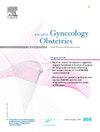反射镜引导定位与线导定位在非可触及乳腺癌切除术中的比较:组织影响和成本分析。
IF 1.7
4区 医学
Q3 OBSTETRICS & GYNECOLOGY
Journal of gynecology obstetrics and human reproduction
Pub Date : 2025-02-01
DOI:10.1016/j.jogoh.2024.102892
引用次数: 0
摘要
背景:线导定位(WGL)治疗不可触及的乳腺癌病变存在钢丝移位、定位困难和后勤挑战等缺点。无线方法,如反射器引导定位(RGL),解决了这些问题,并与乳房MRI兼容。本研究评估了RGL与WGL对组织和成本的影响。研究设计与方法:回顾性比较某大学医院RGL和WGL的组织影响和成本。定量和定性评估包括外科医生和放射科医生的手术时间和问卷调查。成本分析包括设备成本。结果:本研究共纳入60例患者(30例为RGL, 30例为WGL)。RGL组置入器械至手术时间(3.73±5.5天)明显长于WGL组(手术当日或术前)。WGL组所需器械较多,而RGL组费用较高。卫生专业人员报告说,RGL对卫生保健流程和安全产生了重大的积极影响,对培训产生了轻微的负面影响。结论:RGL通过分离放射学和外科提供灵活的日程安排,但受高成本的限制。需要进一步的数据来确定理想的候选药物,评估患者满意度,并评估其在乳腺癌护理中的长期益处。本文章由计算机程序翻译,如有差异,请以英文原文为准。
Reflector-guided localization compared with wire-guided localization for non-palpable breast cancer resection: organizational impacts and costs analysis
Background
Wire-guided localization (WGL) for non-palpable breast cancer lesions has drawbacks like wire migration, localization difficulties, and logistical challenges. Wireless methods, such as reflector-guided localization (RGL), address these issues and are compatible with breast MRI. This study evaluates the organizational and cost impacts of RGL compared to WGL.
Research Design and methods
Our retrospective study compared the organizational impacts and costs of RGL and WGL at a university hospital. Quantitative and qualitative assessments included operating time and a questionnaire for surgeons and radiologists. Cost analysis covered device costs.
Results
The study involved 60 patients (30 with RGL and 30 with WGL). The RGL group had a significantly longer duration between device insertion and surgery (3.73 ± 5.5 days) compared to the WGL group (same day or day before surgery). The WGL group required more devices whereas cost were higher for RGL. Health professionals reported a major positive impact of RGL on healthcare processes and safety, with minor negative impact on training.
Conclusions
RGL offers flexible scheduling by decoupling radiology and surgery but is limited by high costs. Further data is needed to identify ideal candidates, assess patient satisfaction, and evaluate its long-term benefits in breast cancer care.
求助全文
通过发布文献求助,成功后即可免费获取论文全文。
去求助
来源期刊

Journal of gynecology obstetrics and human reproduction
Medicine-Obstetrics and Gynecology
CiteScore
3.70
自引率
5.30%
发文量
210
审稿时长
31 days
期刊介绍:
Formerly known as Journal de Gynécologie Obstétrique et Biologie de la Reproduction, Journal of Gynecology Obstetrics and Human Reproduction is the official Academic publication of the French College of Obstetricians and Gynecologists (Collège National des Gynécologues et Obstétriciens Français / CNGOF).
J Gynecol Obstet Hum Reprod publishes monthly, in English, research papers and techniques in the fields of Gynecology, Obstetrics, Neonatology and Human Reproduction: (guest) editorials, original articles, reviews, updates, technical notes, case reports, letters to the editor and guidelines.
Original works include clinical or laboratory investigations and clinical or equipment reports. Reviews include narrative reviews, systematic reviews and meta-analyses.
 求助内容:
求助内容: 应助结果提醒方式:
应助结果提醒方式:


